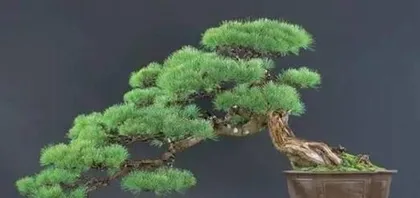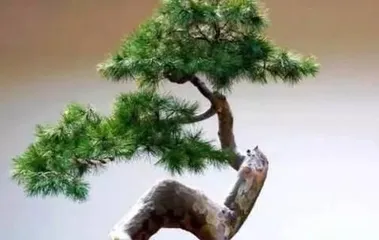Pine bonsai has always been one of the favorite plants for gardening enthusiasts. Correct pruning techniques are key to maintaining the bonsai's beautiful shape and healthy growth. This article will take the Norfolk Island pine as an example to introduce the methods and techniques of pruning pine bonsai.

I: The Principle of Keeping the Bonsai Tidy
Pruning pine bonsai needs to follow a principle: keeping the bonsai tidy. This includes removing weeds and dead branches, cleaning up pine needles, and keeping the soil moist. A tidy bonsai allows the plant to grow in good condition.
II: The Timing for Tip Pruning
Pruning of pine bonsai is mainly done through tip pruning to control its shape and size. For the best results, tip pruning should be done during the vigorous growth period in spring. This can promote the rapid growth of new buds and prevent the pruned branches from dying easily.

III: Controlling the Length of Branch Cuts
When tip pruning, attention should be paid to controlling the length of the branch cuts. For the Norfolk Island pine, the cut length should be controlled between 2-5 cm. Too long or too short will have adverse effects on the bonsai.
IV: Handling the Cut Ends of Branches
After cutting a branch, the cut end should be dealt with promptly. Trim it flat with pruning shears to avoid unsightly bumps or scar marks.
V: Regular Top Pruning
If the top of a pine bonsai grows too tall, it will affect the overall aesthetics of the bonsai. The top needs to be pruned regularly to maintain an appropriate height.

VI: Adjusting the Direction of Branches
The direction of the branches on a pine bonsai directly affects its aesthetic appearance and growth condition. Pruning is needed to adjust the branches to a suitable direction, making the bonsai more beautiful.
VII: Thinning Overly Dense Foliage
Pine bonsai tends to grow overly dense foliage, which affects the plant's light exposure and ventilation, leading to unhealthy growth. Pruning is needed to thin out the overly dense foliage and maintain a balanced growth state for the bonsai.
VIII: Post-Pruning Care
A pruned pine bonsai requires special care. The potting soil should be kept moist to enhance the plant's nutrient absorption, avoid direct UV exposure, and protect the bonsai from the effects of natural disasters.
IX: Avoiding Frequent Pruning
Although pruning is very important for bonsai growth and shape adjustment, frequent pruning can create too large a wound area on the bonsai, making it difficult for the plant to recover quickly. Avoiding frequent pruning is key.
X: Paying Attention to the Trunk's Growth Condition
The growth condition of the pine bonsai trunk also needs attention. If poor growth or pests and diseases are found on the trunk, timely measures should be taken to address the problem.
XI: Crown Pruning Techniques
In addition to branch pruning, crown pruning is also a technique that needs to be mastered for pine bonsai. By pruning the crown in winter, the shape and size of the bonsai can be effectively adjusted for a better aesthetic effect.
XII: Selection of Pruning Tools
The right pruning tools are crucial for the pruning effect and the plant's growth condition. Generally, sharp scissors, saws, tweezers, and other tools are needed to prune a pine bonsai.
XIII: New Shoot Regulation
New shoot regulation is an important part of pruning pine bonsai. By appropriately cutting new shoots, the bonsai can be maintained in a better growth state and with a more beautiful shape.
XIV: Controlling the Force of Pruning
When pruning, attention should be paid to controlling the force. Too much force may damage the plant, leading to pest and disease problems; too little force will not achieve the desired pruning effect.
XV:
The pruning methods and techniques for pine bonsai are key to maintaining its healthy growth and beautiful shape. By making adjustments in areas such as keeping the bonsai tidy, pruning at the right time, and paying attention to details, the pine bonsai can always be kept in its best condition.